Following in Hemingway’s footsteps leads to a great taste (burp!) of Paris
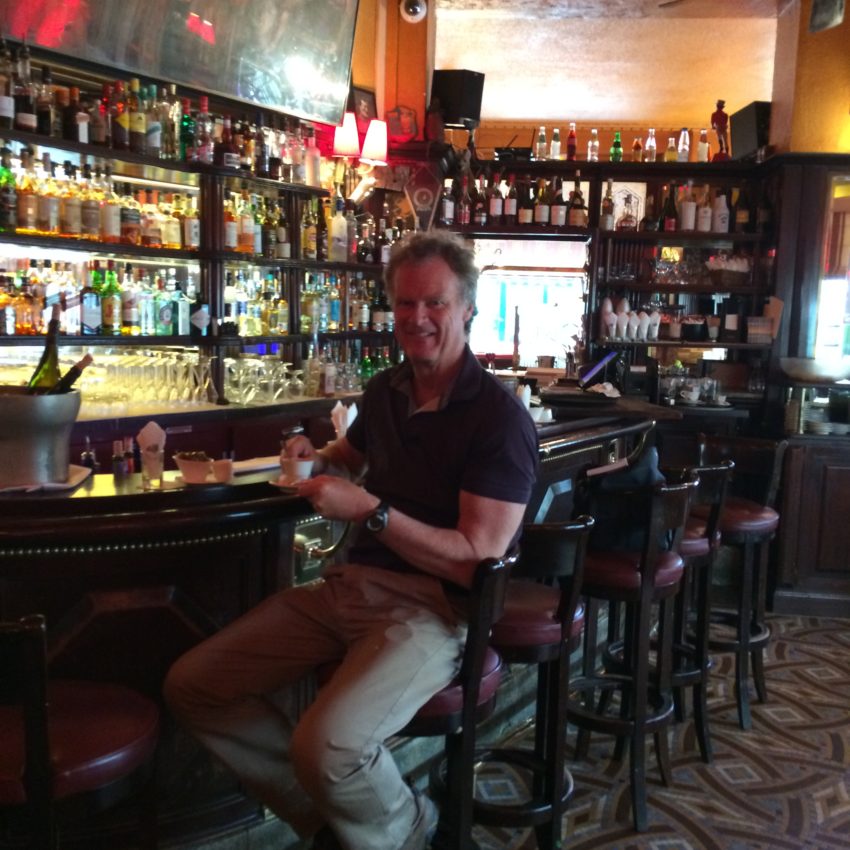
PARIS — The barstool is at the corner of the long, glistening wood bar top. I sat in it randomly as the place was empty on a postcard-perfect sunny afternoon in Paris. The city is coming out of a long winter and no one wanted to sit inside on a bright sunny day inching toward 70. Parisians were all outside, wearing sunglasses, picking at nicoise salads and baguette sandwiches and tuna tartare. I thought, What a great day to sit inside a bar and drink.
After all, I was sitting in Ernest Hemingway’s bar stool.
I had no clue. I had walked into Closerie des Lilas during a day spent following in Hemingway’s footsteps. The Closerie des Lilas was arguably his favorite cafe. He did a lot of his writing here. In fact, he penned “The Sun Also Rises,” his epic novel about the Spanish Civil War which he covered, from one of the seats in the bar. I asked the bartender where the seat was.
“You’re sitting in it, Ernest,” he said with a laugh.
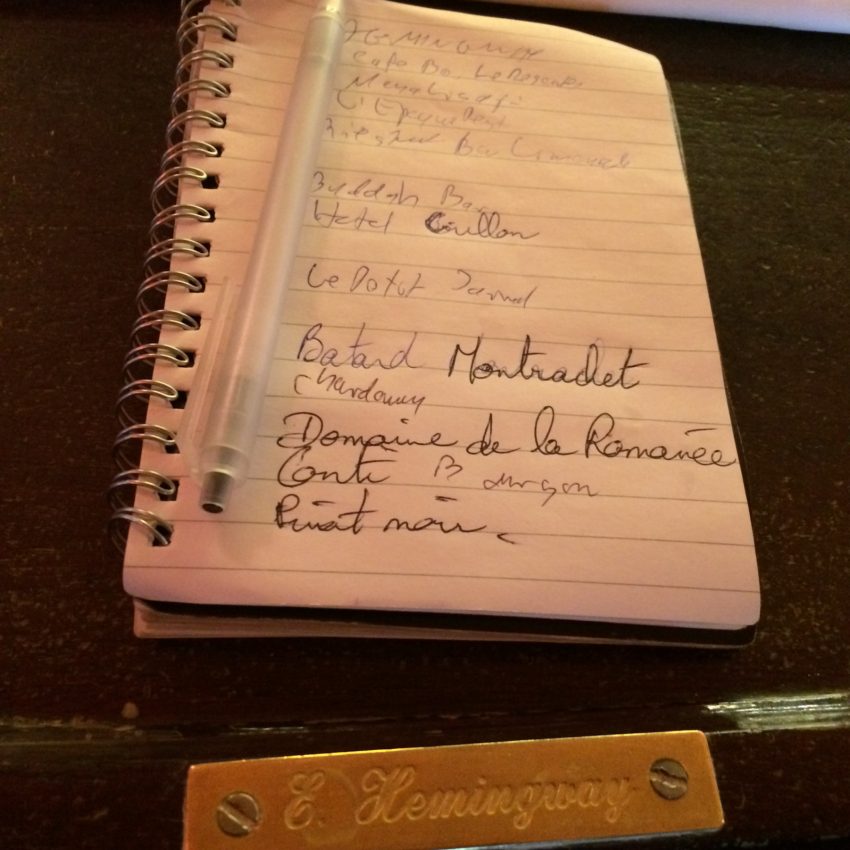
He pointed in front of me. There on a tiny gold plaque was the name “ERNEST HEMINGWAY.” I was sitting in his favorite barstool. Hemingway isn’t my favorite writer. Pat Conroy and Hunter Thompson battle it out for that honor, depending on my mood and level of alcohol. But Hemingway’s life fascinated me. He moved to Paris at 22 when he became a foreign correspondent. He made his name with “The Sun Also Rises” in 1926 — at age 27. He wrote “A Farewell to Arms,” his novel about working with the World War I ambulance drivers in Paris, at 30. He won the Nobel Peace Prize for fiction at 55.
So there are similarities. We’re both writers. But instead of writing “A Farewell to Arms,” I wrote about a erotica hotel in Yucatan. OK, at least we lived overseas and became inspired by our foreign surroundings.

Hopefully, his old surroundings would inspire me. That’s why I left the apartment and went searching for Hemingway. He spent most of his Paris life right around my neighborhood in the Latin Quarter. His two apartments are just up Rue Monge from me. The first is on a quiet side street next to the Cafe Bo LeDescantes. A small plaque next to a bright blue door indicates the second-story apartment window where he spent some of his life in 1920-21. Ugly construction equipment mars any kind of romantic reminiscence.
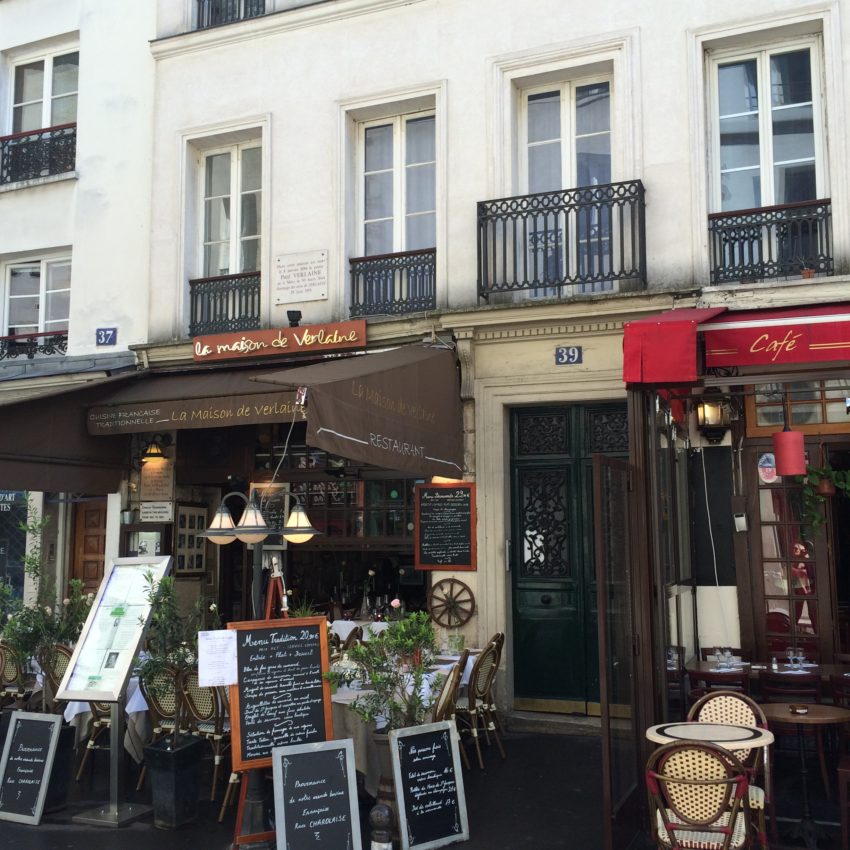
The second apartment is just around the corner on Rue Descartes. He obviously upgraded. Two big, ornately decorated black doors lead into a bright, white apartment building with 19th century guardrail on all the balconies. A tony, romantic cafe, La Maison de Verlaine, is right below it.
Even in his 20s, Hemingway owned Paris. It was a great time to be here. While the Roaring ‘20s captivated America, France was coming out of World War I and the French were falling in love again. Artists were worshipped. Hemingway was the Alpha Male among a group that included Gertrude Stein, Picasso, Jean-Paul Sartre and Samuel Beckett.
I read the book Hemingway wrote about his time in Paris, “A Moveable Feast.” It not only inspired the name of my traveling food column at The Denver Post, but it inspired me to live my life in a foreign clime. Paris in the 20s burst with energy. Every day Hemingway wrote words that would be cherished for eternity and every night he drank and fought and loved.
It’s similar to my life in Rome except my copy eventually lines cat litter boxes.
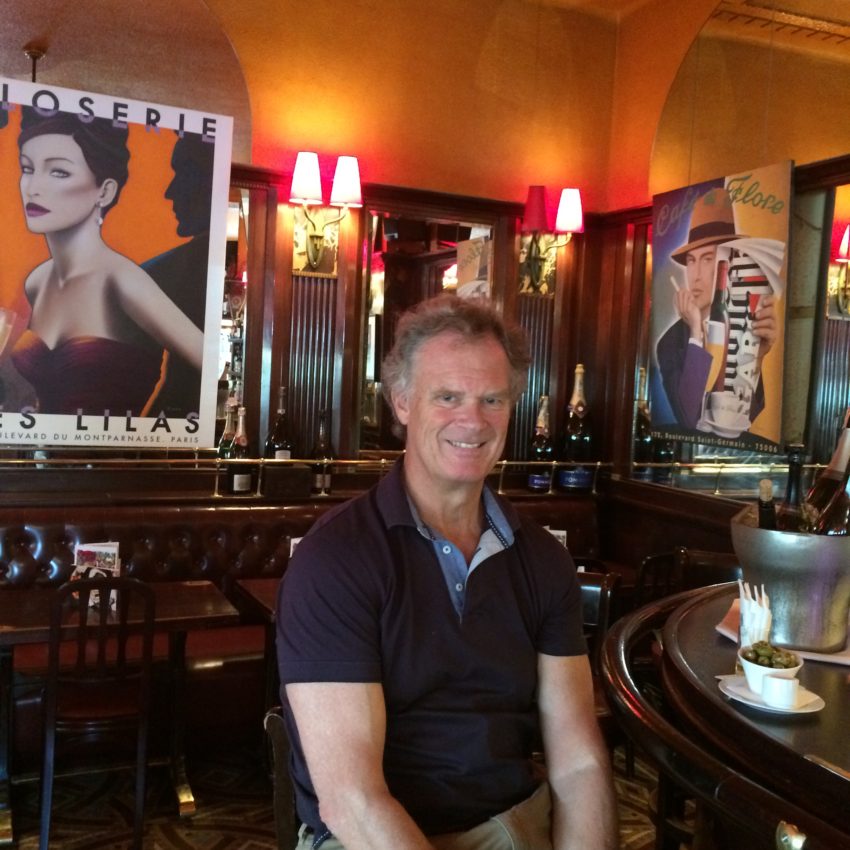
His homes were not secluded. Even in the 20s the Latin Quarter bustled with people and tourists. But Hemingway was very public. That’s why you could walk into Closerie des Lilas most days and find him pounding away at his typewriter, right where I was pounding away at a bottle of Bourgogne Chardonnay.
The bartender, Damien, couldn’t have been more friendly if he was a paid tour guide. I asked him how much the place had changed since Hemingway was going through women like cocktail straws.
“The bar is the same,” he said before pointing to a partition where diners were separated by big brass rails. “They added the brasserie and the outdoor tables but the bar is exactly the same.”
“So this is where Hemingway drank and fought,” I said.
“Yes,” he said, “and fell.”
As the Chardonnay went down, the questions went up. I pulled myself out of 1920s nostalgia to ask him about 21st century Paris. He pinched his lips to his nose, as if he was sipping a rotten Cotes du Rhone.
“It is a mess,” he said. “Violence. Anger. Poverty. Ten years ago everyone was happy. Not anymore.”
He sounded just like a Roman. True, while the U.S. economy is going like a runaway NASCAR driver, Europe’s economy is a mess. Unemployment is up and so is anger. Immigration is being blamed and many are taking it upon themselves to do something about. Vigilante gangs are roaming Paris’ suburbs going after ethnic groups taking jobs. The murders in the Charlie Hebdo newspaper office have Muslims in France, where 6 million Muslims live, fearing reprisals.
I asked Damien about soccer. He’s not a Paris Saint-Germain fan. He loves basketball, particularly the San Antonio Spurs. Tony Parker, the best player France ever produced, is one of its stars. Also on this season’s team was Boris Diaw, another Frenchman.
“Tony Parker is a hero,” Damien said.
“But how could he cheat on Eva Longoria?” I asked.
“Ah!” Damien said, raising his hand as in the French “So what?” gesture, “but he is French!”
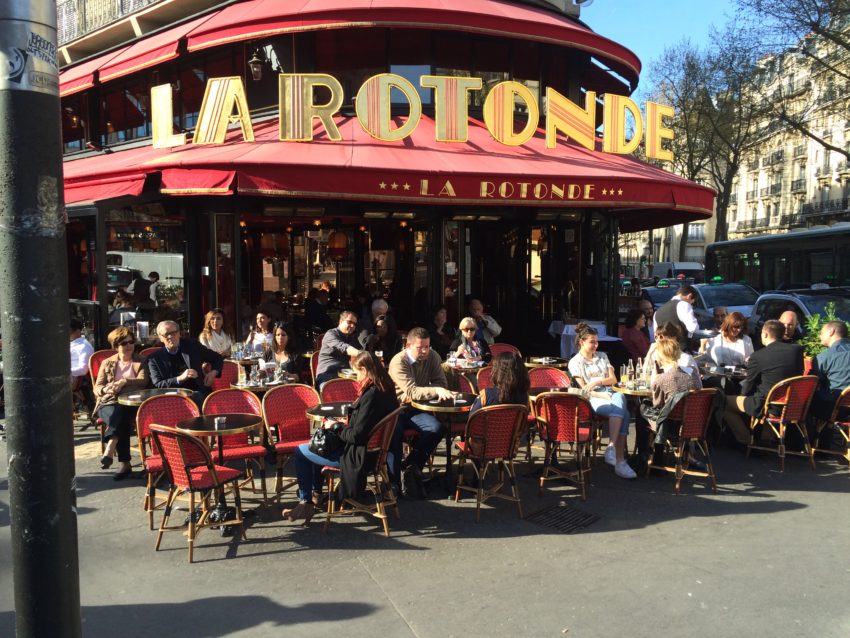
Afterward, I went to one of Hemingway’s dining haunts, La Rotonde, right down the street on Boulevard du Montparnasse. It’s a classic corner Paris restaurant with a couple dozen tables pointed to the busy intersection. Tuxedoed waiters scurried about with big silver trays of food and wine. I ordered Burgundy escargot in garlic sauce and leg of lamb with a nice Sauignon Blanc from Bordeaux. I slurped snails, ate lamb and drank wine chilled out of an ice bucket the rest of the afternoon as I watched Paris walk by.
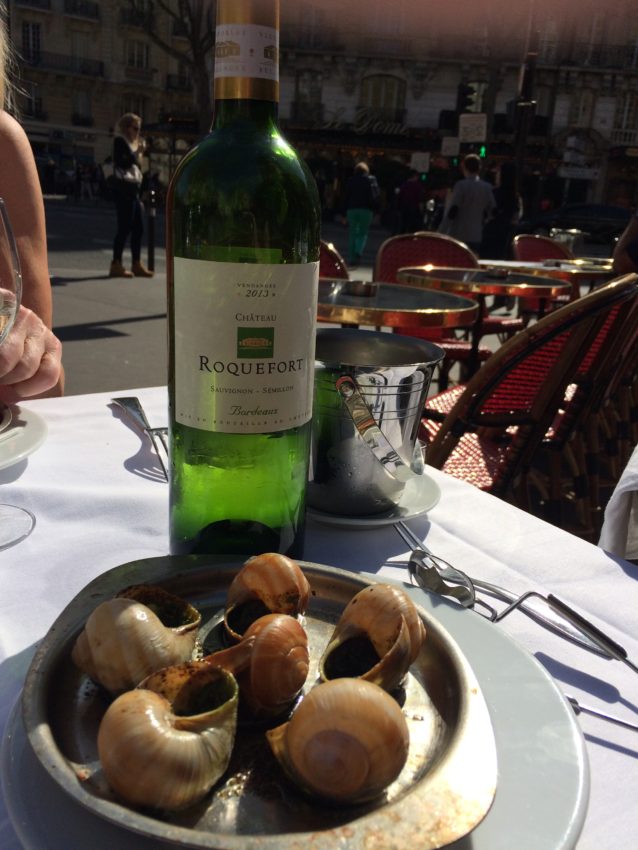
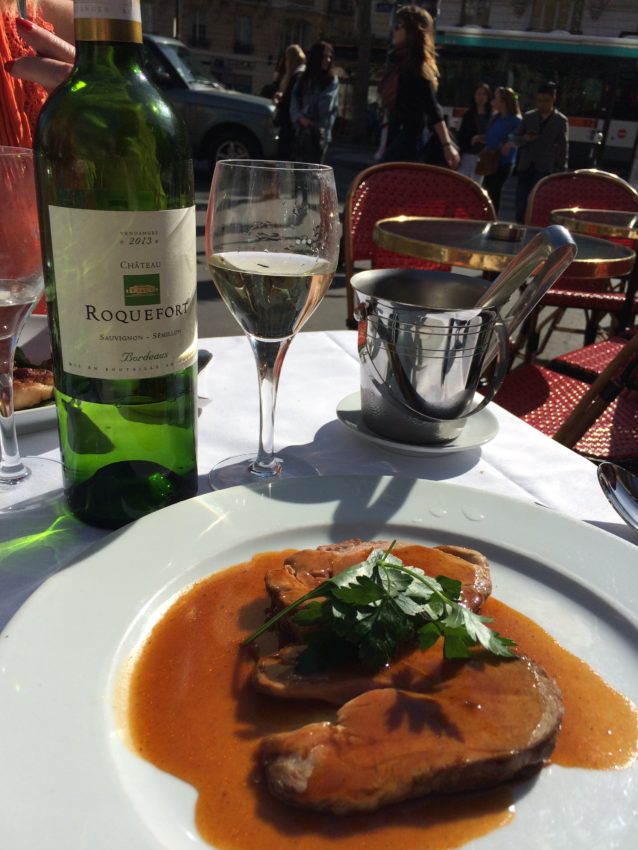
I’m reading this again and it doesn’t look like Hemingway’s barstool rubbed off on my blog. Then again, when you follow in Hemingway’s footsteps, you know you’ll always have a good time.


May 14, 2015 @ 10:13 am
Love the Hemingway post, John. I am soooo jealous!
May 14, 2015 @ 10:22 am
Thanks, Kate. You know when you play the parlor game, Where Would You Like to be Anywhere in the World and in What Time Period? I used to say my choice would be the height of the Roman Empire in about 50 BC. Then I learned Ancient Rome was rife with gangs, violence and poverty. Now I’d say Paris in the ’20s. Cheap, lively and even prettier than it is today.
August 25, 2021 @ 5:19 pm
Taking my granddaughter and her friend to Paris on her senior graduation present, presented me with a similar experience. One morning in mid July we decided to tour Paris in an open top bus. Riding on top was not my favorite thing to do because it was getting really hot. My friend and I rode the bus for a couple of miles and I told my granddaughter we were going to find someplace to cool off and have a cold one. The bus stopped and we got off and walked in a very unique restaurant and bar in a very cool part of town. The outside seating had a lot of patrons but the inside was rather empty. I walked over and sit down at the bar and remarked to my friend how exquisite the bar looked. After cooling off we went back to the hotel room and noticed that I didn’t have my phone with me. We decided to wait until the next day to walk back to the bar and search for my phone. After walking back into the bar the next day about the same time, I unconsciously went over and sit down at the same bar stool and ordered a gin and tonic. It wasn’t until then that I noticed the little brass plaque in front of me on the bar. The lighting was such that I couldn’t make out what it said and I asked the bartender what this was all about. He told me that Ernest Hemingway sat at this stool when he wrote “The Sun Also Rises”. He then said to me, all you’re missing is the bitters. I did not understand what he meant so I asked why bitters, he said Earnest Hemingway drink gin and tonic with a few drops of bitters. Oh, and the phone, when we returned to the hotel later that day my phone was laying on the bed, the maid had found it and had put it on the bed. My favorite drink now is gin and tonic with bitters, I call it my Hemingway.